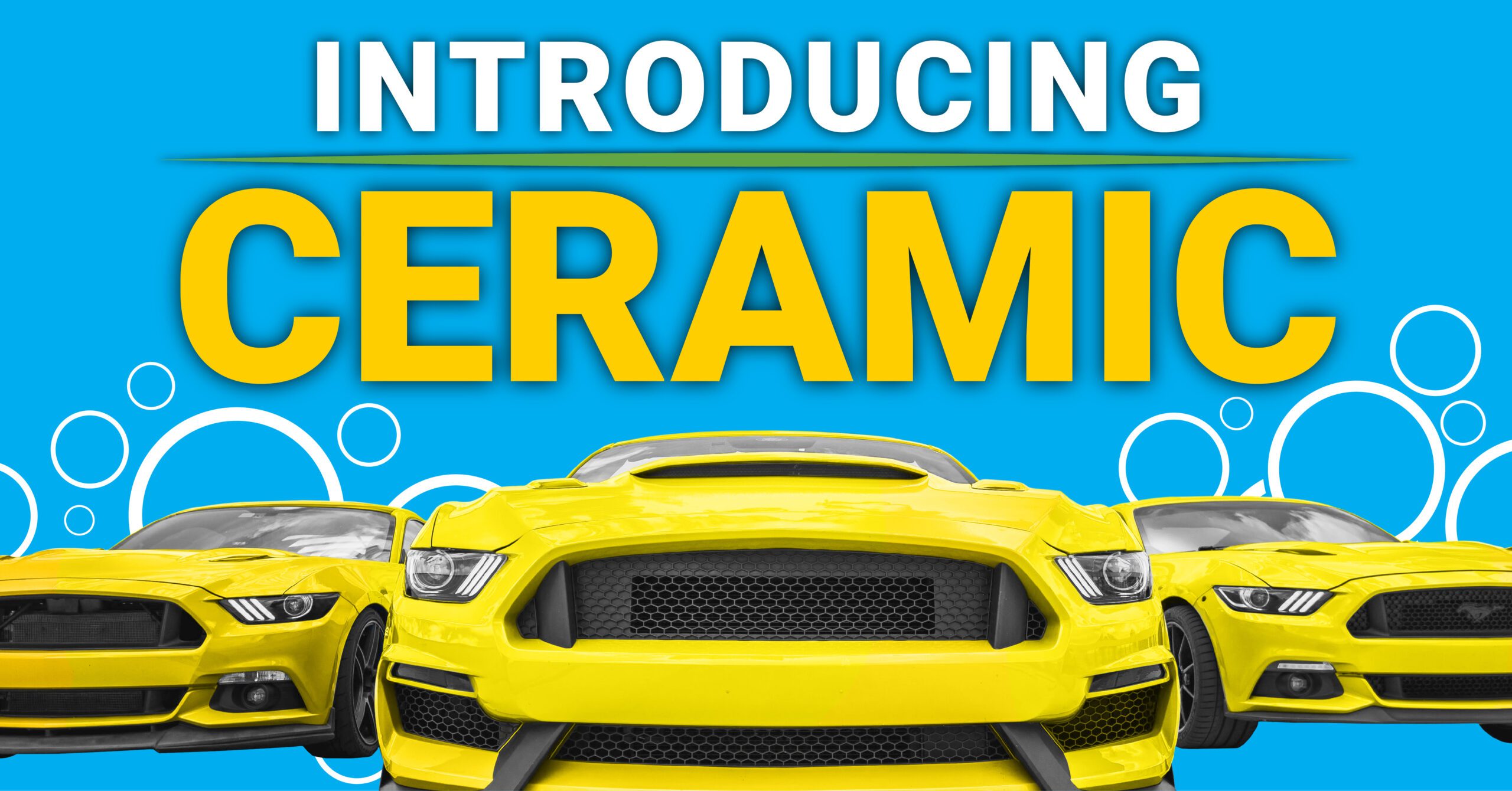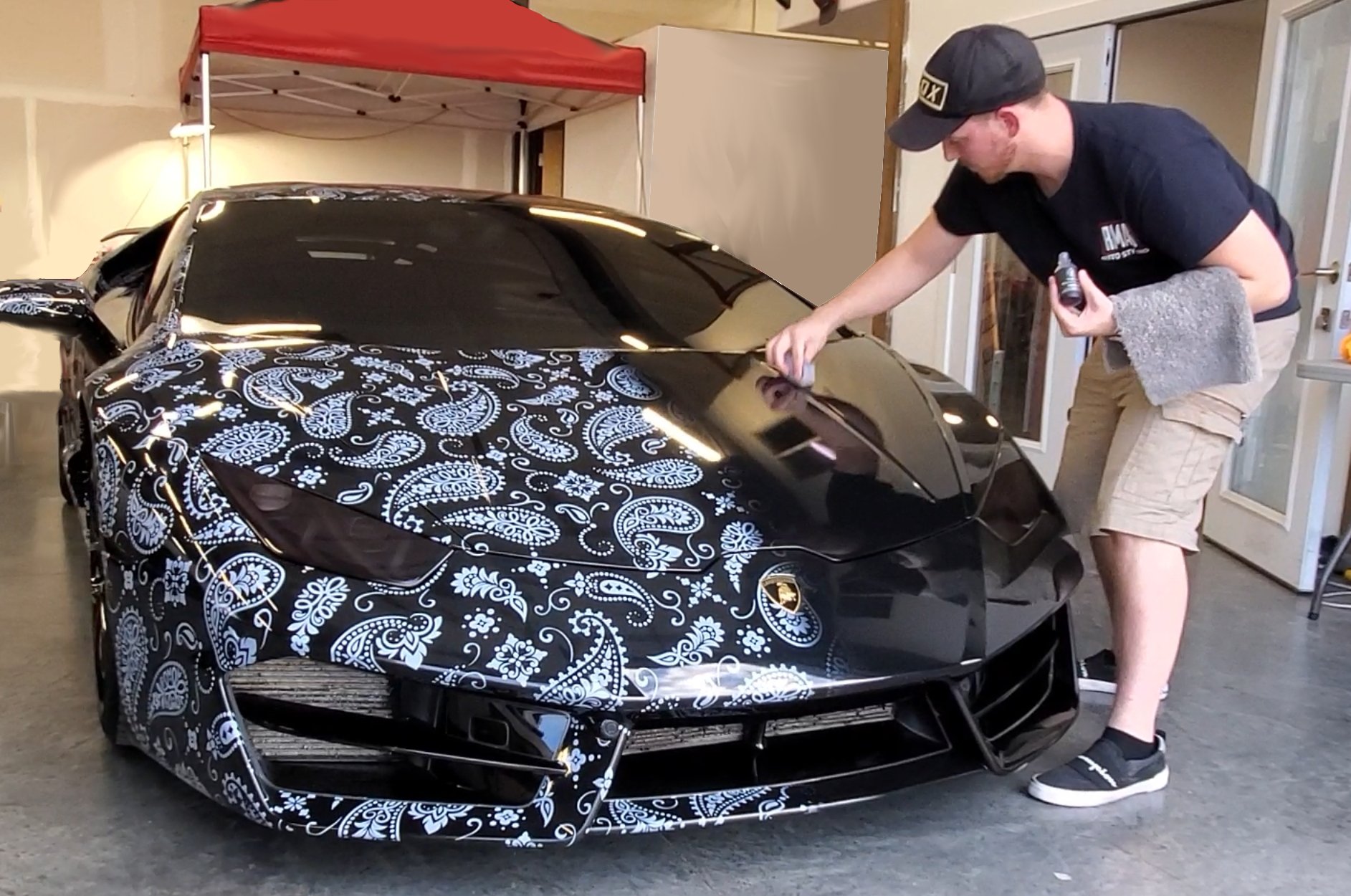The Scientific Research Behind Ceramic Layer: How It Enhances Your Car's Aesthetic and Resilience

Understanding Ceramic Covering Chemistry
The chemical composition of ceramic coverings plays a crucial function in establishing their longevity and safety buildings on automobile surfaces. Ceramic finishes are usually made up of silicon dioxide (SiO2), which is a primary element providing solidity and warm resistance. Various other active ingredients such as titanium dioxide, silicon carbide, and polysilazanes are frequently contributed to improve particular residential or commercial properties like UV resistance, hydrophobicity, and adhesion.
Silicon dioxide, likewise called silica, creates a strong and transparent layer on the automobile surface when applied properly. This layer works as a guard, securing the paint from ecological impurities, UV rays, oxidation, and chemical discolorations. Titanium dioxide helps in blocking damaging UV rays that can create paint fading and degeneration. Silicon carbide is known for its abrasion resistance, making the ceramic finish resilient and challenging against physical damages. Polysilazanes are utilized to boost the covering's adaptability and adhesion to the lorry's surface area, ensuring resilient defense. Comprehending the chemistry behind ceramic finishes is important for both applicators and automobile proprietors to appreciate the value and advantages these layers provide in preserving the visual charm and durability of lorries.
Boosted Gloss and Mirror-like Finish
Comprehending the chemical structure of ceramic layers not only exposes their protective buildings yet likewise drops light on exactly how they add to accomplishing an improved gloss and mirror-like coating on lorry surface areas. The trick to the shiny impact hinges on the nano-ceramic fragments present in the layer. These particles load in tiny pores and blemishes on the surface, producing a smooth and level coating. As light hits the layered surface area, it mirrors uniformly, providing the look of a deep, shiny luster. Additionally, the chemical structure of ceramic layers enables them to form a strong bond with the automobile's paintwork, preventing oxidation and preserving the clarity of the surface over time. This bond additionally resists ecological pollutants, such as dust and gunk, that can plain the luster of the car. The combination of filling up buildings, light reflection, and durable security makes ceramic finishes a preferred option for those seeking a mirror-like and vibrant surface for their vehicles.
Influence On Paint Defense and Longevity
Ceramic layers for automobiles significantly improve the long life and protection of the paintwork. By developing a chemically immune layer on top of the car's clear layer, ceramic finishings act as a barrier against various environmental impurities that can harm the paint over time.
In regards to longevity, ceramic coatings use a resilient solution contrasted to conventional waxes or sealants. While waxes might last a couple of weeks to a few months, ceramic finishings can in 2015 with appropriate maintenance. This prolonged lifespan not just decreases the regularity of reapplications yet likewise conserves effort and time over time. Overall, the protective homes of ceramic finishes add dramatically to protecting the car's paintwork and improving its visual charm over an extended duration.
Resistance to Impurities and Harsh Elements
With the protective shield provided by ceramic coverings versus different environmental contaminants and aspects, cars are able to maintain their excellent appearance regardless of exposure to extreme conditions. Ceramic layers produce a solid barrier that repels water, dust, dirt, and various other typical toxins, stopping them from bonding to the car's surface. This hydrophobic nature not only makes cleansing less complicated yet additionally reduces the danger of water areas and etching triggered by acidic contaminants. In addition, the chemical resistance of ceramic finishes helps protect the paint from bird droppings, pest splatter, tree sap, and other corrosive compounds that can damage the surface in time.
In addition, ceramic coatings supply UV protection, securing the car's paint from the sun's dangerous rays that can create fading and oxidation. This resistance to UV damages assists maintain the color strength and luster of the paint for longer durations. By developing a sturdy and lasting obstacle, ceramic coverings make certain that the lorry's outside try these out continues to be shielded versus a vast array of pollutants and rough aspects, protecting its aesthetic appeal and sturdiness.
Application Techniques and Upkeep Tips
For optimum results when applying ceramic coatings to vehicles, utilizing correct techniques and adhering to suggested maintenance methods are vital. Before using the ceramic finishing, it is vital to completely tidy and sanitize the lorry's surface to guarantee correct adhesion.
When using the ceramic finishing, it is recommended to work in tiny areas to guarantee even coverage and to prevent the item from drying also promptly. Utilizing applicator pads or microfiber cloths, use the covering in a crisscross or up-and-down activity, depending on the item's instructions. After the covering is applied, enable it to treat for the specified time before rubbing off any type of residue.
In regards to upkeep, regular washing with pH-neutral soaps and staying clear of abrasive devices or extreme chemicals will assist preserve the ceramic finishing's stability. Routine examinations for any damage or wear on the coating can likewise help preserve its protective homes over time.

Conclusion
Finally, ceramic finish improves a car's visual charm and sturdiness via its chemical composition, providing a glossy finish and securing the paint from ecological contaminants. Its resistance to severe components and convenience of upkeep make it a prominent selection for cars and truck owners wanting to protect the look of their cars. In general, ceramic covering is a clinically backed option for preserving the appearance and long life of your lorry.
Recognizing the chemistry behind ceramic layers is crucial for both applicators and vehicle proprietors to appreciate the value and benefits these coverings provide in preserving the visual allure and durability of vehicles. (ceramic pro)
Comprehending the chemical make-up of ceramic finishings her explanation not just exposes their protective image source properties but also drops light on exactly how they contribute to accomplishing an improved gloss and mirror-like finish on automobile surface areas. By creating a chemically immune layer on top of the lorry's clear layer, ceramic coverings act as an obstacle against various ecological impurities that can damage the paint over time. Generally, the safety residential properties of ceramic coverings add substantially to maintaining the vehicle's paintwork and improving its visual charm over an extensive period.
In verdict, ceramic finishing enhances a lorry's visual charm and resilience via its chemical composition, offering a glossy surface and protecting the paint from environmental contaminants.